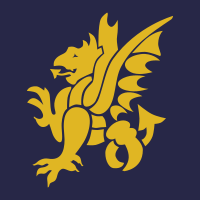43rd (Wessex) Infantry Division
| Wessex Division 43rd (Wessex) Division 43rd (Wessex) Infantry Division |
|
|---|---|

43rd (Wessex) Division insignia, World War II.
|
|
| Active | 1908–1919 1920–1945 1947–1961 |
| Country |
|
| Branch |
|
| Type | Infantry |
| Size | Division |
| Nickname(s) | "Fighting Wessex Wyverns" |
| Engagements |
World War II Operation Overlord Operation Market Garden Battle of the Bulge Operation Blackcock |
| Commanders | |
| Notable commanders |
Gwilym Ivor Thomas |
The 43rd (Wessex) Infantry Division was an infantry division of the British Army. It was originally raised in 1908 as part of the Territorial Force, as the Wessex Division, and disbanded in 1920 with the rest of the Territorial Force. In 1915 it became the 43rd (Wessex) Division. It was reformed as the 43rd (Wessex) Infantry Division in 1920 as part of the Territorial Army. A 2nd Line duplicate, the 45th (2nd Wessex) Division, was raised on the doubling of the Territorials for both World War I and World War II.
The division served with distinction in the Second World War on the Western Front from June 1944 until May 1945, suffering horrendous casualties but gaining an excellent reputation and was known to the Germans as the Yellow Devils. The division was disbanded and again reformed in the Territorial Army after the war. Beckett 2008 claims that Territorial Army units that were in suspended animation were formally reactivated on 1 January 1947, though no personnel were assigned until commanding officers and permanent staff had been appointed in March and April 1947. On 1 May 1961 the division was merged with a district to become 43rd (Wessex) Division/District.
The division was created in 1908, originally as the Wessex Division, as part of the Territorial Force. It had under command the Hampshire Brigade, the South Western Brigade and the Devon and Cornwall Brigade, along with numerous other support units of the Royal Artillery, Royal Engineers and the Royal Army Medical Corps.
On 24 September 1914, a few weeks after the outbreak of the First World War, the division accepted overseas service in British India in order to relieve regular units that were required for active service in Europe. The Divisional and Brigade HQs, both artillery and infantry, did not embark for India. The "Division" sailed on 9 October 1914 and arrived in India in November, where it remained throughout the Great War, reverting to peacetime service conditions. However, it supplied battalions and drafts of replacements for the divisions fighting in the Middle East. In May 1915 it became the 43rd (Wessex) Division and the brigades were redesignated the 128th (Hampshire) Brigade, 129th (South Western) Brigade and the 130th (Devon and Cornwall) Brigade respectively.
...
Wikipedia
